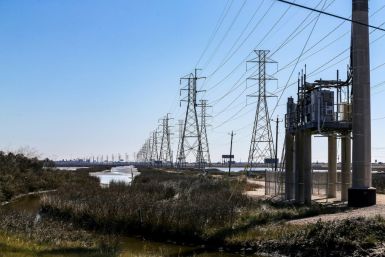No Exit: Are Loan Exit Fees a Bad Thing?
Mortgage exit fees have drawn a lot of discussion recently, with the Federal Government announcing its plan to legislate against them (one of a range of proposed banking reforms) and the NAB offering to reimburse the exit fees of borrowers who switch to it.
The conventional wisdom spurring the Government's action is that exit fees hinder competition in the home loan market by preventing borrowers from switching to providers with better loan products. Therefore, if these fees are removed more borrowers will be inclined to shop around, spurring competition that will lead to better deals for consumers. It also makes political sense; a government that legislates against loan fees is sticking up for the little people, right?
Well, not necessarily.
In fact, as a number of key players in the industry have pointed out, outlawing exit fees may actually reduce competition, consolidate the market and leave borrowers with fewer options to choose from. While the Government is right to try and prevent unfair charges being levied, the end result of the proposed legislation may be the opposite of what it is aiming for: fewer home loan products and an industry centred even more around the big four banks and their subsidiaries.
The deal with the fees
Some of the most competitive home loans available nowadays offer very attractive interest rates and special deals like 'honeymoon periods'. Under these deals, lenders are prepared to accept thinner interest margins and put off recovering their loan establishment costs for a number of years in order to attract borrowers.
For borrowers, this can provide a more accessible route to home ownership as borrowing costs are significantly reduced and home loan repayments are more affordable.
The reason lenders, particularly smaller lenders, can afford to provide these deals are the exit fees. They offer such competitive rates and conditions on the proviso that the borrowers they offer them to stick around for a certain period of time; long enough for the lenders to recoup their costs and turn a buck. If the borrowers want to opt out early, the exit fees charged protect the lender against the loss they would otherwise incur. As the maxim says: You don't get something for nothing.
It stings for a reason
A typical situation involves borrowers on a fixed-rate loan who see the variable rate come down and want to switch to another lender to take advantage of the improved conditions. While their lender says it can be done, the fee to leave is often calculated at many thousands of dollars. The principle reason for this is that although the lender provided the loan, it had also borrowed that money at a fixed rate from elsewhere. If the borrower leaves the lender's commitment remains, and that commitment is passed on in the form of what can be very high exit fees. Similarly, borrowers can find themselves facing hefty fees if they want to switch out of discounted or special rate loans within three years from first taking the loan out.
Unfortunately, many borrowers only learn the exact figure of the exit fees when they seek to change loan providers. At this late stage, with a better deal in sight, they may feel like they are getting unfairly stung or being locked into a deal they now no longer want. This has, not surprisingly, resulted in a lot of complaints to lenders and the Financial Ombudsman Service.
Borrowers' concerns vs. borrowers' interests
The Government's proposal to limit or remove exit fees is designed to appeal to these concerns. But the question the Government needs to ask is: is this going to be cheaper for borrowers in the long run?
When you consider the impact on small lenders, the answer is no. The deals offered by these home loan providers are contingent on fees to recoup costs if borrowers leave early. Without these fees the deals cannot be offered.
That situation will not be the same with the major lenders, which will be able to absorb the extra funding costs, especially in the short term while the minor players are squeezed out.
In the end, the result will likely be increased fees and initial interest rates as lenders seek to avoid short term losses, and decreased competition. First home buyers will be further challenged by needing more money upfront while all borrowers will miss out on the benefits of a dynamic market.
With strong warnings being voiced by respected industry commentators let's hope our legislators consider all the ramifications of this market intervention.
Exit fees are not alone
Finally, for borrowers who are considering switching loan providers, don't forget that exit fees are not the only cost incurred when transferring a loan. For instance, lenders mortgage insurance (LMI), the biggest up-front cost when borrowing more than 80% of a property's value, needs to be factored in together with all the other costs associated with establishing a new loan. Therefore, before pursuing a deal with a new lender make sure you've undertaken a thorough cost-benefit analysis and determined that you really will be better off in the long run.
So while legislating against punitive and unfair exit fees should be applauded, exit fees in themselves are not necessarily anti-competitive or unfair. Their removal could end up doing more harm than good. Having said that, lenders would help their cause if they made the calculation and quantum of exit fees easier to understand and much more transparent from the outset.






